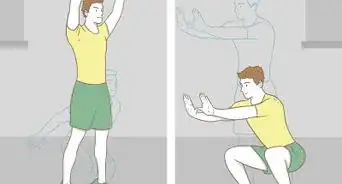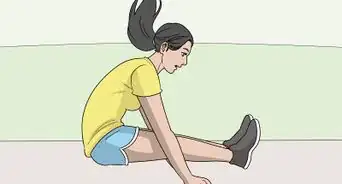This article was co-authored by wikiHow staff writer, Sophia Latorre. Sophia Latorre is a Content Manager on the wikiHow team. Before joining wikiHow, Sophia worked as a technical editor and was published in six International Energy Agency (IEA) Wind Annual Reports. Now, she writes, edits, and reviews articles for the wikiHow Content Team, working to make the content as helpful as possible for readers worldwide. Sophia holds a BA in English from Colorado State University.
wikiHow marks an article as reader-approved once it receives enough positive feedback. In this case, several readers have written to tell us that this article was helpful to them, earning it our reader-approved status.
This article has been viewed 710,175 times.
Learn more...
The long jump is a track and field event that requires speed in addition to a strong jump. Learning the long jump may seem like a tricky task but if you break it down the steps are actually quite simple. Proper technique and form are important for maximizing the distance of your jump. There are three phases to the long jump: the approach, the takeoff, and the landing. Once you get the hang of things, you'll find that this track and field event is both fun and rewarding.
Steps
Marking Your Starting Point
-
1Decide which foot you will take off with. The takeoff foot is the one that hits the takeoff board; it is the foot you jump off the board with. Generally, a right-handed long jumper takes off with the left foot. New jumpers can try both styles to see which works best.[1]
- To determine your takeoff foot, have a friend gently push you from behind. The foot you step forward from is your dominant foot and can be used for the takeoff.
- Alternatively, you can determine your takeoff foot by thinking about which foot you kick with or which foot leads when you jump over something, such as a hurdle.
-
2Figure out the number of strides you will take. Practice your run-up several times to determine how many strides you'll take before performing the jump. Generally, the number of strides corresponds to your age, for example:[2]
- 10 years = 10-11 strides
- 11 years = 10-12 strides
- 12 years = 11-13 strides
- 13 years = 12-14 strides
- 14 years = 13-15 strides
- 15 years = 14-16 strides
- 16 years = 15-17 strides
- 17 years = 15-21 strides
Advertisement -
3Determine your starting point. To discover the starting point for your jump, start with your back to the sand pit at the point you will jump from. Run toward the area you generally start from, but only run the same number of strides you have determined you will take before jumping. The spot where you end your last stride is your starting point. Do this several times and adjust your starting point if necessary.[3]
- Another way to determine your starting point is to begin from a certain point on the track and run forward the number of strides you have determined you will take. Mark the point of your last stride.
- Do this several times so you can find an average distance based on the number of strides you take.
-
4Place markers at your starting point. You'll need to use visible markers that will stand out from other jumpers who have a similar starting point. You can put cones, small flags, brightly colored rocks, or colored tape at your starting point. Place them off to the side of the track so they don't get in the way of jumpers or people competing in other events.
Setting up the Approach
-
1Begin with your takeoff foot forward. This is the starting position. Lean forward slightly and stand with your back to the pit. Make sure you are positioned in the middle of the track.[4]
-
2Run down the track. Gradual acceleration is key, and after a few strides you should be in an upright sprinting position. Keep your head and eyes up rather than looking down. Run full speed until you reach the takeoff board.[5]
-
3Lower your center of gravity on the second to last step. Place your foot flat on the ground, lower your hips, bend your knee, and flex your ankle to lower your center of gravity.[6]
-
4Make your last stride shorter. Shorten your last step to maintain speed. Place your foot flat on the ground out in front of your body. Flex the joints of your leg to raise your center of gravity.[7]
Taking Off
-
1Plant your takeoff foot flat on the ground. It's important that you plant your takeoff foot flat on the ground, rather than using your heel or toe. If you take off heel-first, your speed will be reduced. If you take off on your toes, your jump will be unstable and you're also at a higher risk for injury.[8]
-
2Swing your lead knee and opposite arm upward. To increase your force against the ground, swing your lead knee (the one you takeoff with) and your opposite arm upward. Keep the rest of your body in an upright position.[9]
-
3Jump for distance, not height. Concentrate on making your jump as long as possible rather than as high as possible. Look ahead of you, rather than down at the board or the sand to keep your momentum moving forward.[10]
Landing the Long Jump
-
1Try the sail technique if you are a beginner. To do this, propel your free leg (opposite of your takeoff leg) forward as far as possible. While in the air, bring your takeoff leg forward as well so your legs are parallel to each other.[11]
-
2Try the hitch-kick or hang if you are an advanced jumper. To do the hitch-kick, cycle your arms and legs to counteract forward rotation in the air. For the hang, to counteract forward rotation extend your body so that your arms are above your head and your legs are hanging down.[12]
-
3Swing your arms down and lift your legs up. When preparing to land, swing your arms down and lift your legs up before reaching the sand.[13]
-
4Angle your body forward. Remember that your distance is measured by the part of your body that lands the furthest back, so do your best to avoid falling backwards or touching your hands to the pit behind your body.[14]
-
5Bend your knees to soften the impact. Bring your arms forward to help you maintain your balance and keep yourself from falling over.[15] When your heels touch the pit, press your feet down and pull your hips up. This, in addition to your momentum, will carry your body past the mark where your heels touched down.[16]
Community Q&A
-
QuestionHow do I get farther in jumping?
 Community AnswerThe stronger your legs, the farther you will be able to jump. Work on leg strength (and core too, as this helps a lot with running faster, especially sprinting) to improve your jump, along with working on technical things - using your arms in a way that helps you propel yourself forward, always popping up with your foot when jumping instead of just pushing forward, etc.
Community AnswerThe stronger your legs, the farther you will be able to jump. Work on leg strength (and core too, as this helps a lot with running faster, especially sprinting) to improve your jump, along with working on technical things - using your arms in a way that helps you propel yourself forward, always popping up with your foot when jumping instead of just pushing forward, etc. -
QuestionIs it allow to land on one foot in long jump?
 DonaganTop AnswererYes, but all the best jumpers land on two feet. It's easier to injure yourself landing on one foot.
DonaganTop AnswererYes, but all the best jumpers land on two feet. It's easier to injure yourself landing on one foot. -
QuestionCan I make a sprint in just 10 steps?
 DonaganTop AnswererYes, if you're comfortable with that. Many jumpers take a few more steps than that.
DonaganTop AnswererYes, if you're comfortable with that. Many jumpers take a few more steps than that.
References
- ↑ https://www.thoughtco.com/step-by-step-long-jump-technique-3258964
- ↑ https://coachingyoungathletes.com/2015/08/10/how-to-teach-a-long-jump-run-up-in-7-easy-steps/
- ↑ https://www.thoughtco.com/step-by-step-long-jump-technique-3258964
- ↑ https://www.thoughtco.com/step-by-step-long-jump-technique-3258964
- ↑ https://www.thoughtco.com/step-by-step-long-jump-technique-3258964
- ↑ http://www.teachpe.com/track_and_field/long_jump/long_jump_technique.php
- ↑ http://www.teachpe.com/track_and_field/long_jump/long_jump_technique.php
- ↑ https://www.myactivesg.com/sports/athletics/training-method/athletics-for-beginners/how-do-i-perform-a-long-jump
- ↑ http://www.teachpe.com/track_and_field/long_jump/long_jump_technique.php
- ↑ http://www.teachpe.com/track_and_field/long_jump/long_jump_technique.php
- ↑ https://www.myactivesg.com/sports/athletics/training-method/athletics-for-beginners/how-do-i-perform-a-long-jump
- ↑ http://www.teachpe.com/track_and_field/long_jump/long_jump_technique.php
- ↑ http://www.teachpe.com/track_and_field/long_jump/long_jump_technique.php
- ↑ https://www.thoughtco.com/step-by-step-long-jump-technique-3258964
- ↑ http://www.teachpe.com/track_and_field/long_jump/long_jump_technique.php
- ↑ https://www.thoughtco.com/step-by-step-long-jump-technique-3258964
About This Article
Before you long jump, determine which foot is dominant by having a friend gently push you from behind and see which foot you step forward with. Then, run down the center of the track and plant your dominant foot on the ground before you jump. Next, push off and swing the lead knee and the opposite arm upward to increase your force off the ground. As you jump, bring both your legs and arms forward to avoid falling backwards. Finally, bend your knees to maintain balance as you land. For different ways to land once you’ve had more practice, read on!
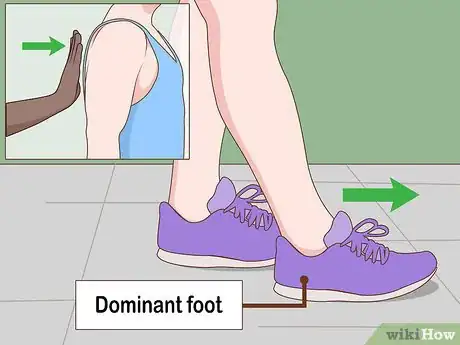


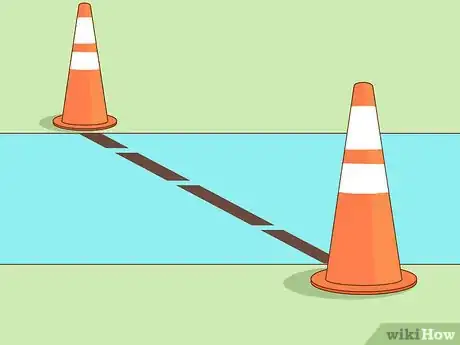
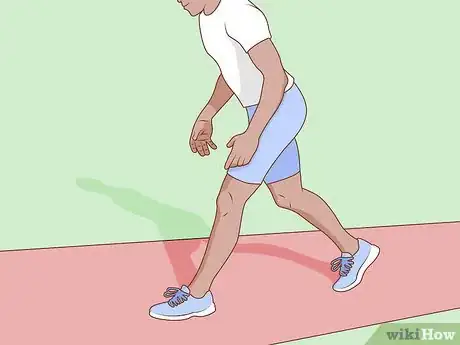
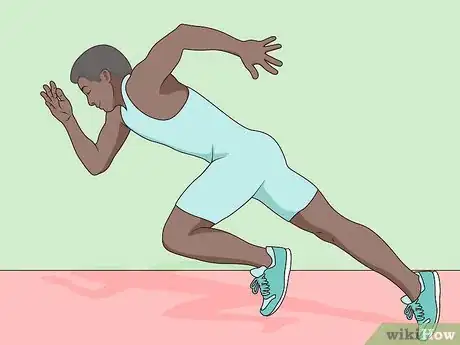
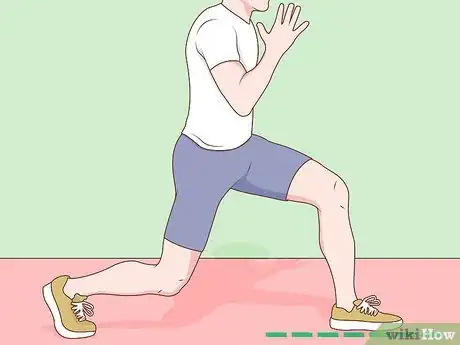
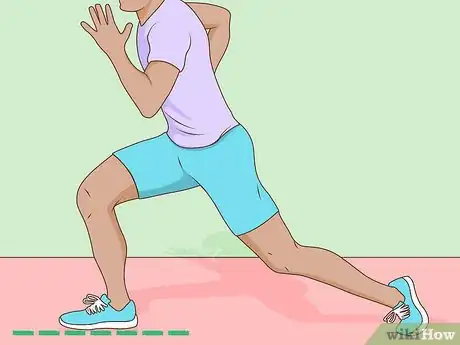
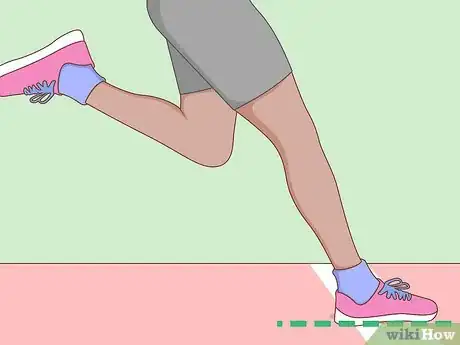
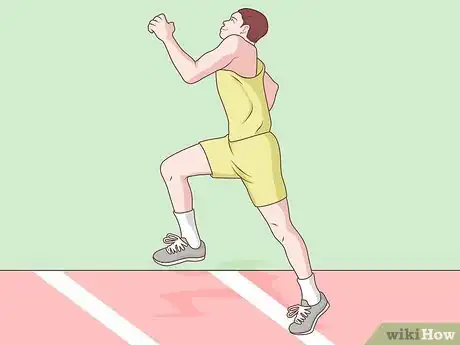
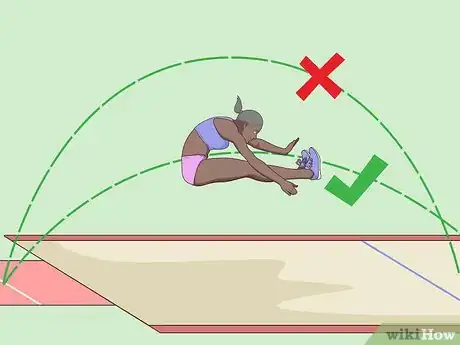
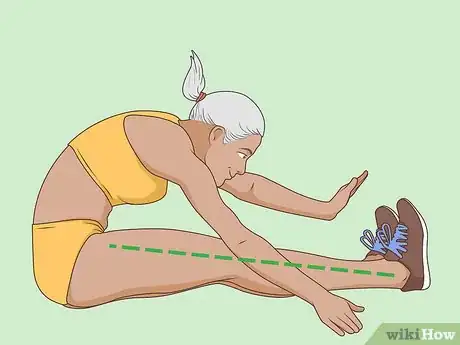
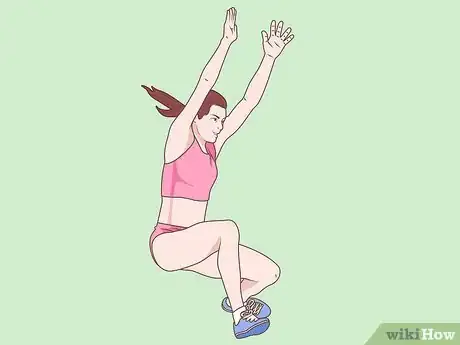
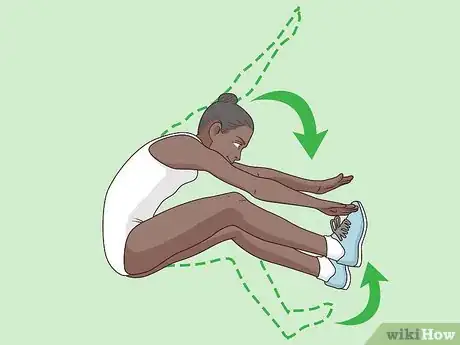

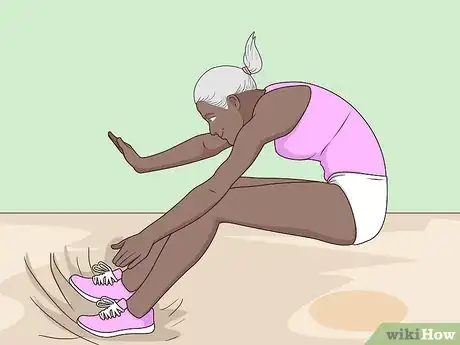




-Step-15-Version-2.webp)

